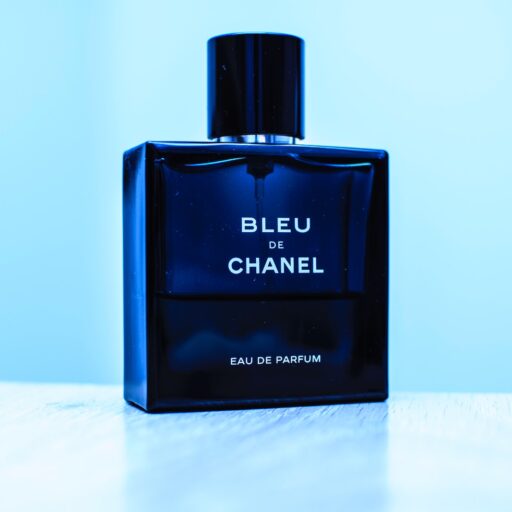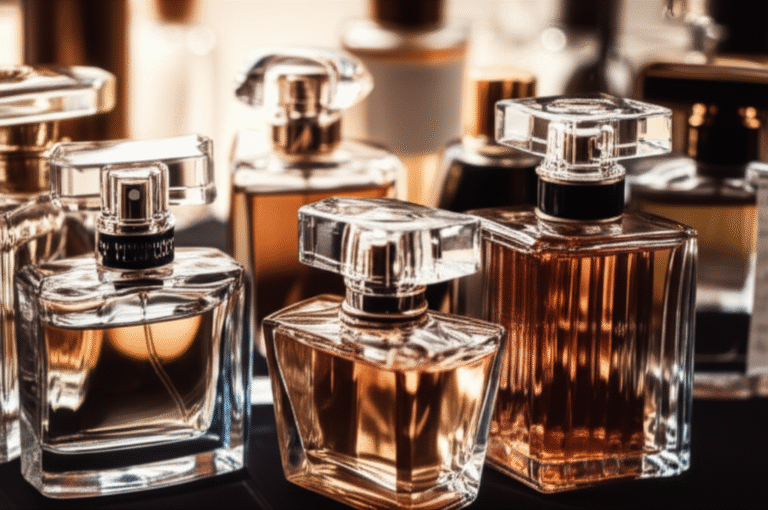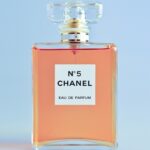Support our educational content for free when you purchase through links on our site. Learn more
What is the Most Famous Perfume? Discover the Top 25 Iconic Scents of All Time! 🌟
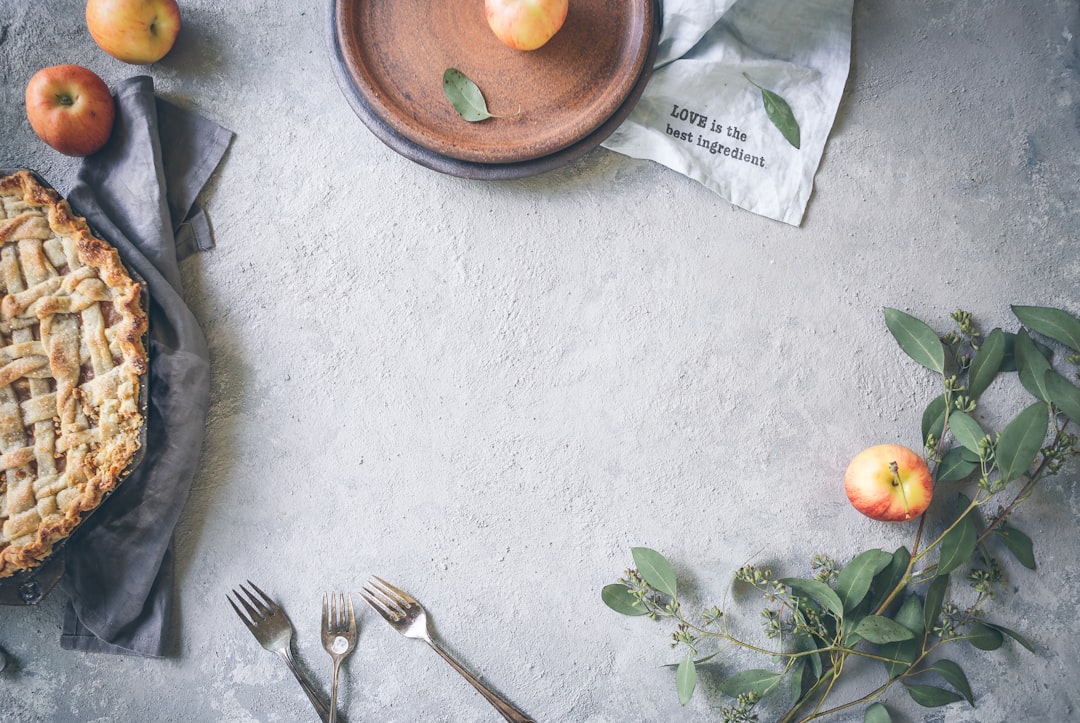
Have you ever caught a whiff of a fragrance that instantly transported you back to a cherished memory or made you feel like a million bucks? The world of perfume is a magical realm where scents tell stories, evoke emotions, and even define eras. In this article, we dive deep into the enchanting world of fragrances to uncover the 25 most famous perfumes of all time—from the timeless elegance of Chanel No. 5 to the bold allure of Yves Saint Laurent Opium.
Did you know that the first recorded use of perfume dates back to ancient Mesopotamia? Fast forward to today, and the fragrance industry has blossomed into a multi-billion dollar empire, with iconic scents that have stood the test of time. So, what makes a perfume truly famous? Join us as we explore the history, artistry, and emotional connections behind these legendary fragrances.
Key Takeaways
- Iconic Status: Discover the 25 most famous perfumes that have left an indelible mark on the fragrance world.
- Cultural Impact: Learn how fragrances like Chanel No. 5 and Dior J’adore have shaped beauty standards and cultural trends.
- Fragrance Families: Understand the different fragrance families and how they contribute to a perfume’s appeal.
- Choosing Your Scent: Get tips on how to select the perfect perfume that resonates with your personal style.
- Emotional Connection: Explore the fascinating link between scent and memory, and how fragrances can evoke powerful emotions.
Ready to find your signature scent? 👉 Shop iconic perfumes like Chanel No. 5 and Dior J’adore today!
Table of Contents
- Quick Tips and Facts
- The Allure of Iconic Fragrances: A Brief History
- Top 25 Most Famous Perfumes of All Time
- What Makes a Perfume Famous?
- The Evolution of Perfume: Trends Through the Decades
- Celebrity Fragrances: Are They Worth the Hype?
- Understanding Fragrance Families: Notes and Compositions
- How to Choose the Right Perfume for You
- The Art of Perfume Application: Tips for Lasting Scents
- Scent Memories: The Emotional Connection to Fragrance
- Sustainability in the Fragrance Industry: A Growing Trend
- Conclusion
- Recommended Links
- FAQ
- Reference Links
Quick Tips and Facts
- Did you know that the history of perfume dates back thousands of years? Perfumes have evolved from simple fragrant oils used in religious ceremonies to the complex and nuanced scents we know and love today.
- Ever wondered why some perfumes are so expensive? The rarity and quality of ingredients, the craftsmanship involved, and the brand’s prestige all play a role.
- Finding your signature scent is a journey, not a race! Don’t be afraid to experiment with different fragrance families and notes to discover what speaks to you. You can read our perfume names list to get started.
The Allure of Iconic Fragrances: A Brief History

The human fascination with fragrance is deeply rooted in history. From ancient civilizations using incense for religious rituals to modern-day perfumers crafting intricate blends, the desire to enhance our lives with captivating scents has remained constant.
Ancient Origins and the Rise of Perfume
The earliest recorded use of perfume dates back to ancient Mesopotamia and Egypt, where fragrant oils and resins were extracted from plants and used in religious ceremonies, cosmetics, and even mummification. The Egyptians, in particular, were known for their sophisticated perfume-making techniques, using ingredients like frankincense, myrrh, and lotus flower.
Perfume in the Classical World
The ancient Greeks and Romans further developed the art of perfumery, incorporating new ingredients and techniques. They used perfumes lavishly in their daily lives, scenting their bodies, clothes, homes, and even their baths. The Romans, in particular, were known for their extravagant use of perfume, with emperors even having their own personal perfumers.
The Evolution of Modern Perfume
The Middle Ages saw a decline in perfume use in Europe, but it was revived during the Renaissance, thanks in part to the discovery of new trade routes to the East, which brought exotic spices and fragrant materials to the continent. The 18th century marked a turning point in the history of perfume, with the development of modern perfumery techniques and the rise of Grasse, France, as a center of perfume production.
The Birth of Iconic Fragrances
The 20th century witnessed the birth of many of the iconic perfumes we know and love today. From Chanel No. 5, which revolutionized the industry with its groundbreaking use of aldehydes, to Guerlain Shalimar, inspired by an Indian love story, these fragrances became synonymous with luxury, glamour, and timeless elegance.
Top 25 Most Famous Perfumes of All Time
Choosing the “most famous” perfumes is subjective, as fame can be influenced by factors like cultural impact, sales figures, and enduring popularity. However, some fragrances have undoubtedly left an indelible mark on the world of perfume, becoming true icons. Here are 25 of the most famous perfumes of all time, in no particular order:
-
Chanel No. 5 – A timeless classic that needs no introduction, Chanel No. 5 is a sophisticated and elegant floral aldehyde that has been a bestseller since its launch in 1921. Marilyn Monroe famously declared it the only thing she wore to bed.
👉 CHECK PRICE on: Amazon | Walmart | Chanel Official
-
Guerlain Shalimar – Inspired by an Indian love story, Shalimar is a sensual and exotic oriental fragrance with notes of vanilla, citrus, and iris. It was created in 1925 and remains a Guerlain masterpiece.
👉 CHECK PRICE on: Amazon | Walmart | Guerlain Official
-
Dior J’adore – A radiant and sensual floral fragrance, J’adore is a celebration of femininity. It was launched in 1999 and has become one of Dior’s most popular perfumes.
👉 CHECK PRICE on: Amazon | Walmart | Dior Official
-
Yves Saint Laurent Opium – A bold and provocative oriental fragrance, Opium caused a sensation upon its release in 1977. Its spicy, ambery, and floral notes create an unforgettable and alluring scent.
👉 CHECK PRICE on: Amazon | Walmart | YSL Beauty Official
-
Lancôme La Vie Est Belle – A sweet and gourmand fragrance, La Vie Est Belle is a celebration of happiness and joy. It was launched in 2012 and has become one of Lancôme’s bestsellers.
👉 CHECK PRICE on: Amazon | Walmart | Lancôme Official
-
Calvin Klein CK One – A groundbreaking fragrance upon its release in 1994, CK One is a citrusy and aromatic fragrance marketed as unisex. It became a symbol of the 1990s and remains popular today.
👉 CHECK PRICE on: Amazon | Walmart | Calvin Klein Official
-
Thierry Mugler Angel – A gourmand and oriental fragrance, Angel is known for its unique combination of sweet and gourmand notes, including chocolate, caramel, and honey. It was launched in 1992 and has become a cult classic.
👉 CHECK PRICE on: Amazon | Walmart | Mugler Official
-
Dolce & Gabbana Light Blue – A fresh and citrusy fragrance, Light Blue is inspired by the Mediterranean Sea. It was launched in 2001 and has become one of Dolce & Gabbana’s most popular perfumes.
👉 CHECK PRICE on: Amazon | Walmart | Dolce & Gabbana Beauty Official
-
Chanel Coco Mademoiselle – A modern and sophisticated fragrance, Coco Mademoiselle is a tribute to the young Coco Chanel. It was launched in 2001 and has become one of Chanel’s bestsellers.
👉 CHECK PRICE on: Amazon | Walmart | Chanel Official
-
Giorgio Armani Acqua di Gioia – A fresh and aquatic fragrance, Acqua di Gioia is inspired by the Mediterranean Sea. It was launched in 2010 and has become one of Giorgio Armani’s most popular perfumes.
👉 CHECK PRICE on: Amazon | Walmart | Giorgio Armani Beauty Official
-
Marc Jacobs Daisy – A playful and feminine fragrance, Daisy is known for its cheerful and youthful scent. It was launched in 2007 and has become one of Marc Jacobs’ most popular perfumes.
👉 CHECK PRICE on: Amazon | Walmart | Marc Jacobs Fragrances Official
-
Viktor & Rolf Flowerbomb – An explosive and floral fragrance, Flowerbomb is a celebration of femininity. It was launched in 2005 and has become one of Viktor & Rolf’s most popular perfumes.
👉 CHECK PRICE on: Amazon | Walmart | Viktor & Rolf Official
-
Givenchy L’Interdit – A classic fragrance that was created for Audrey Hepburn in 1957, L’Interdit is a sophisticated and elegant floral aldehyde. It was relaunched in 2018 with a modern twist.
👉 CHECK PRICE on: Amazon | Walmart | Givenchy Beauty Official
-
Yves Saint Laurent Black Opium – A modern and addictive take on the original Opium, Black Opium is a gourmand and coffee-infused fragrance. It was launched in 2014 and has become one of Yves Saint Laurent’s bestsellers.
👉 CHECK PRICE on: Amazon | Walmart | YSL Beauty Official
-
Gucci Bloom – A fresh and floral fragrance, Bloom is inspired by the idea of a thriving garden. It was launched in 2017 and has become one of Gucci’s most popular perfumes.
👉 CHECK PRICE on: Amazon | Walmart | Gucci Official
-
Tom Ford Black Orchid – A luxurious and sensual fragrance, Black Orchid is known for its dark and mysterious scent. It was launched in 2006 and has become one of Tom Ford’s signature perfumes.
👉 CHECK PRICE on: Amazon | Walmart | Tom Ford Official
-
Creed Aventus – A masculine and fruity fragrance, Aventus is inspired by the life of Napoleon Bonaparte. It was launched in 2010 and has become one of Creed’s most popular perfumes.
👉 CHECK PRICE on: Amazon | Walmart | Creed Boutique
-
Dior Sauvage – A fresh and spicy fragrance, Sauvage is inspired by the great outdoors. It was launched in 2015 and has become one of Dior’s bestsellers.
👉 CHECK PRICE on: Amazon | Walmart | Dior Official
-
Paco Rabanne 1 Million – A bold and masculine fragrance, 1 Million is known for its sweet and spicy scent. It was launched in 2008 and has become one of Paco Rabanne’s bestsellers.
👉 CHECK PRICE on: Amazon | Walmart | Paco Rabanne Official
-
Jean Paul Gaultier Le Male – A masculine and oriental fragrance, Le Male is known for its unique bottle design and its fresh and powdery scent. It was launched in 1995 and has become one of Jean Paul Gaultier’s signature perfumes.
👉 CHECK PRICE on: Amazon | Walmart | Jean Paul Gaultier Official
-
Versace Eros – A masculine and fresh fragrance, Eros is inspired by Greek mythology. It was launched in 2012 and has become one of Versace’s most popular perfumes.
👉 CHECK PRICE on: Amazon | Walmart | Versace Official
-
Chanel Allure Homme Sport – A fresh and sporty fragrance, Allure Homme Sport is a modern classic. It was launched in 2004 and has become one of Chanel’s bestsellers.
👉 CHECK PRICE on: Amazon | Walmart | Chanel Official
-
Bleu de Chanel – A sophisticated and masculine fragrance, Bleu de Chanel is known for its woody and aromatic scent. It was launched in 2010 and has become one of Chanel’s bestsellers.
👉 CHECK PRICE on: Amazon | Walmart | Chanel Official
-
Tom Ford Tobacco Vanille – A warm and spicy fragrance, Tobacco Vanille is a unisex perfume known for its rich and decadent scent. It was launched in 2007 and has become one of Tom Ford’s most popular perfumes.
👉 CHECK PRICE on: Amazon | Walmart | Tom Ford Official
-
Jo Malone London Pomegranate Noir – A fruity and spicy fragrance, Pomegranate Noir is a unisex perfume known for its seductive and alluring scent. It was launched in 2005 and has become one of Jo Malone London’s most popular perfumes.
👉 CHECK PRICE on: Amazon | Walmart | Jo Malone London Official
What Makes a Perfume Famous?
What elevates a fragrance from simply smelling pleasant to achieving iconic status? Several factors contribute to a perfume’s rise to fame:
- A Captivating Scent: This seems obvious, but a truly famous perfume boasts a unique and memorable fragrance that resonates with a wide range of people. It’s a scent that turns heads, sparks conversations, and lingers in the air long after the wearer has left the room.
- Quality Ingredients: Iconic perfumes often utilize high-quality, rare, and sometimes even surprising ingredients. These ingredients create depth, complexity, and longevity in the scent.
- Masterful Blending: Crafting a famous perfume is an art form. It requires a skilled “nose” (a master perfumer) who understands the interplay of fragrance notes and how to create a harmonious and captivating blend.
- Marketing and Cultural Impact: A perfume’s success is often intertwined with its marketing campaign and cultural impact. Think of the iconic imagery associated with Chanel No. 5 or the celebrity endorsements that propel certain fragrances to stardom. A perfume that captures the zeitgeist of a particular era or becomes associated with a glamorous lifestyle can quickly gain notoriety.
- Timeless Appeal: Truly famous perfumes transcend trends. They possess a timeless quality that appeals to generation after generation. These scents become classics, their appeal enduring long after their initial release.
The Evolution of Perfume: Trends Through the Decades
Just like fashion and music, perfume trends have evolved throughout history, reflecting changing tastes, cultural shifts, and technological advancements. Let’s take a fragrant journey through the decades to explore the evolution of perfume trends:
1920s: The Roaring Twenties and the Rise of Aldehydes
The 1920s marked a turning point in perfumery with the introduction of aldehydes, synthetic ingredients that add a sparkling, effervescent quality to fragrances. Chanel No. 5, with its groundbreaking use of aldehydes, epitomized the glamorous and liberated spirit of the era.
1930s: Elegance and Sophistication
The 1930s saw a shift towards more elegant and sophisticated fragrances. Powdery and floral notes, often with a touch of sweetness, were popular, reflecting the feminine ideal of the time. Guerlain Shalimar, with its sensual blend of vanilla, iris, and citrus, became an icon of the decade.
1940s: Wartime Restraint and the Rise of Green Notes
The 1940s, marked by World War II, saw a shift towards more restrained and practical fragrances. Green notes, reminiscent of nature and freshness, gained popularity. Nina Ricci L’Air du Temps, with its dove-shaped bottle symbolizing peace, became a symbol of hope during a turbulent time.
1950s: The Golden Age of Perfume
The 1950s are often considered the golden age of perfumery. With the postwar economic boom, women embraced luxury and glamour. Floral aldehydes, like Diorissimo and Givenchy L’Interdit, were incredibly popular, embodying the feminine and elegant style of the era.
1960s: Youthful Energy and the Rise of Aquatics
The 1960s brought about a cultural revolution, and perfume trends followed suit. Youthful energy and a sense of freedom were reflected in the rise of aquatic and citrusy fragrances. These scents were lighter and more refreshing than their predecessors, appealing to a new generation.
1970s: Bold Statements and the Power of Patchouli
The 1970s were a time of bold statements and self-expression, and perfume trends followed suit. Oriental fragrances, often heavy on patchouli, musk, and amber, were popular, reflecting the bohemian and rebellious spirit of the era. Yves Saint Laurent Opium, with its provocative name and intoxicating blend of spices, florals, and resins, became an icon of the decade.
1980s: Power Dressing and the Rise of Gourmands
The 1980s were the era of power dressing, and perfume trends reflected this bold and assertive attitude. Strong, shoulder-padded silhouettes were matched with equally powerful fragrances. Gourmand perfumes, with their edible and delicious notes like vanilla, chocolate, and caramel, also gained popularity.
1990s: Minimalism and the Rise of Unisex Fragrances
The 1990s saw a shift towards minimalism and a more relaxed approach to style. Clean, fresh, and minimalist fragrances, often with aquatic or ozonic notes, were popular. Unisex fragrances, like Calvin Klein CK One, also gained traction, reflecting a growing sense of gender fluidity.
2000s: Celebrity Fragrances and the Rise of Fruity-Florals
The 2000s saw an explosion of celebrity fragrances, with everyone from Britney Spears to Jennifer Lopez launching their own signature scents. Fruity-floral perfumes, often with notes of berries, vanilla, and musk, were incredibly popular.
2010s: Niche Perfumery and the Quest for Uniqueness
The 2010s witnessed a growing interest in niche perfumery, as consumers sought out unique and unconventional scents. Oud, a resinous and woody ingredient, became incredibly popular, adding a touch of luxury and exoticism to fragrances.
2020s and Beyond: Sustainability and Inclusivity
As we move into the 2020s, sustainability and inclusivity are becoming increasingly important in the fragrance industry. Consumers are demanding ethically sourced ingredients, eco-friendly packaging, and fragrances that cater to a diverse range of tastes and preferences.
Celebrity Fragrances: Are They Worth the Hype?
Celebrity fragrances have become ubiquitous in the perfume industry, with everyone from pop stars to actors attaching their names to signature scents. But are these fragrances worth the hype, or are they simply a marketing ploy?
The Appeal of Celebrity Fragrances
Celebrity fragrances often hold a certain allure for fans. They offer a way to connect with their idols on a more personal level, capturing a bit of their perceived glamour and lifestyle. These fragrances are often marketed aggressively, with captivating ad campaigns featuring the celebrity’s image and persona.
The Quality Debate
The quality of celebrity fragrances can vary widely. Some celebrities collaborate closely with renowned perfumers to create high-quality scents that can stand on their own merits. Others, however, may prioritize marketability over quality, resulting in generic or forgettable fragrances.
Beyond the Hype
It’s important to approach celebrity fragrances with a discerning eye. Don’t be swayed solely by the celebrity endorsement or the flashy packaging. Instead, focus on the scent itself. Does it appeal to your personal taste? Does it have good longevity and sillage? Read reviews, try samples, and determine if the fragrance is a good fit for you, regardless of the name attached to it.
Hidden Gems and Notable Exceptions
While some celebrity fragrances may fall short, there are hidden gems to be discovered. Some celebrities are genuinely passionate about perfume and invest time and effort into creating high-quality scents. Additionally, some celebrity fragrances have achieved cult status, becoming beloved classics in their own right.
The Verdict
Ultimately, the worth of a celebrity fragrance is subjective. It depends on your personal preferences, your expectations, and the specific fragrance in question. Don’t dismiss a fragrance solely because it’s associated with a celebrity, but don’t be afraid to be critical and discerning in your choices.
Understanding Fragrance Families: Notes and Compositions
Navigating the world of perfume can feel like learning a new language. With so many different scents, it’s helpful to understand the basic fragrance families and the notes that comprise them. This knowledge can help you identify your preferences and find fragrances you’re more likely to enjoy.
Fragrance Families
Perfumes are typically categorized into fragrance families based on their dominant scent profiles. Here are some of the most common fragrance families:
- Floral: As the name suggests, floral fragrances are dominated by the scents of various flowers, such as rose, jasmine, lily of the valley, and gardenia. They can range from light and fresh to rich and heady.
- Oriental: Oriental fragrances are warm, sensual, and exotic, often featuring notes of vanilla, amber, musk, spices, and resins. They tend to be heavier and more intense than other fragrance families.
- Woody: Woody fragrances are characterized by the scents of woods, such as cedarwood, sandalwood, vetiver, and patchouli. They can range from fresh and earthy to warm and smoky.
- Citrus: Citrus fragrances are refreshing and invigorating, dominated by the scents of citrus fruits, such as lemon, orange, grapefruit, and bergamot. They tend to be light and uplifting.
- Aquatic: Aquatic fragrances evoke the freshness of the ocean, often featuring notes of sea salt, seaweed, and marine accord. They tend to be light, airy, and refreshing.
- Gourmand: Gourmand fragrances are inspired by edible treats, featuring notes of vanilla, chocolate, caramel, honey, and other sweet and delicious accords. They tend to be warm, comforting, and inviting.
Fragrance Notes
Fragrances are complex blends of different scent notes, which unfold gradually over time. These notes are typically categorized into three levels:
- Top Notes: The top notes are the first scents you smell when you apply a fragrance. They are the most volatile and evaporate quickly, usually lasting only a few minutes. Citrus, fruity, and aquatic notes are often found in the top notes.
- Heart Notes: The heart notes are the middle notes of a fragrance, emerging once the top notes have faded. They form the core of the scent and last for several hours. Floral, spicy, and green notes are often found in the heart notes.
- Base Notes: The base notes are the longest-lasting notes of a fragrance, providing the foundation and depth of the scent. They linger on the skin for hours, even after the top and heart notes have faded. Woody, musky, ambery, and vanilla notes are often found in the base notes.
How to Choose the Right Perfume for You
Choosing the right perfume can be a daunting task, especially with so many options available. But it doesn’t have to be overwhelming. By understanding your preferences, exploring different fragrance families, and following a few simple tips, you can find a scent that complements your personality and makes you feel confident and alluring.
1. Identify Your Preferences
Start by considering what types of scents you’re naturally drawn to. Do you prefer fresh and clean scents, warm and spicy scents, or sweet and floral scents? Think about the perfumes you’ve smelled and liked in the past, and try to identify any common themes or notes.
2. Explore Fragrance Families
Once you have a general idea of your preferences, start exploring different fragrance families. Visit a department store or perfume boutique and sample perfumes from each family. Don’t be afraid to ask for recommendations from sales associates, who can guide you towards scents that align with your tastes.
3. Consider the Occasion
Different perfumes are appropriate for different occasions. A light and fresh fragrance might be perfect for everyday wear, while a more intense and sensual scent might be better suited for evening events. Consider the time of year, the dress code, and the overall mood you want to create when choosing a perfume.
4. Test on Your Skin
Perfume interacts with your body chemistry, so it’s essential to test fragrances on your skin before making a purchase. Spray a small amount on your wrist or inner elbow and allow it to dry down for a few minutes. The scent will evolve over time, so it’s important to see how it smells on your skin throughout the day.
5. Don’t Overdo It
When it comes to perfume, less is more. A few spritzes are all you need to create a subtle and alluring scent. Overapplying perfume can be overwhelming for both you and those around you.
6. Trust Your Instincts
Ultimately, the best perfume for you is the one that makes you feel confident and happy. Don’t be afraid to trust your instincts and choose a scent that speaks to you, even if it’s not the most popular or trendy fragrance.
The Art of Perfume Application: Tips for Lasting Scents
Applying perfume is more than just spritzing it on your wrists and walking away. It’s an art form that can enhance the longevity and projection of your fragrance, creating a subtle and alluring scent trail. Here are some tips for mastering the art of perfume application:
1. Apply to Pulse Points
Your pulse points are the warmest areas of your body, where your blood vessels are closest to the skin. Applying perfume to these areas helps to diffuse the scent more effectively. Common pulse points include:
- Wrists
- Inner elbows
- Behind the ears
- Base of the throat
- Behind the knees
2. Don’t Rub
Resist the urge to rub your wrists together after applying perfume. Rubbing generates heat, which can alter the fragrance’s composition and cause the top notes to fade more quickly.
3. Start Light
If you’re unsure how strong a fragrance is, start with one or two spritzes. You can always add more later if needed.
4. Layer Your Scents
Layering different scented products from the same fragrance line can enhance the longevity and complexity of your scent. Start with a scented body wash or lotion, followed by perfume, and finish with a matching hair mist.
5. Consider Your Hair
Your hair can hold onto fragrance well, creating a subtle and alluring scent trail. Spray perfume onto your hairbrush or directly onto your hair, focusing on the ends rather than the roots.
6. Store Perfume Properly
Perfume can degrade over time if not stored properly. Keep your perfumes in a cool, dark place, away from direct sunlight and heat.
7. Reapply Throughout the Day
Most perfumes last for several hours, but you may need to reapply throughout the day, especially if you have oily skin or live in a hot climate.
Scent Memories: The Emotional Connection to Fragrance
Fragrance has a powerful connection to our emotions and memories. A whiff of a familiar scent can transport us back in time, evoking vivid memories of people, places, and experiences. This phenomenon, known as odor-evoked autobiographical memory, is a testament to the profound impact that scent can have on our lives.
The Science Behind Scent Memories
The olfactory bulb, the part of the brain responsible for processing smells, is located close to the amygdala, which processes emotions, and the hippocampus, which is involved in memory formation. This close proximity explains why scents are so effective at triggering emotional responses and vivid memories.
The Power of Association
Scent memories are often formed through association. When we smell a particular fragrance, our brain links it to the experiences, emotions, and people we associate with that scent
Conclusion
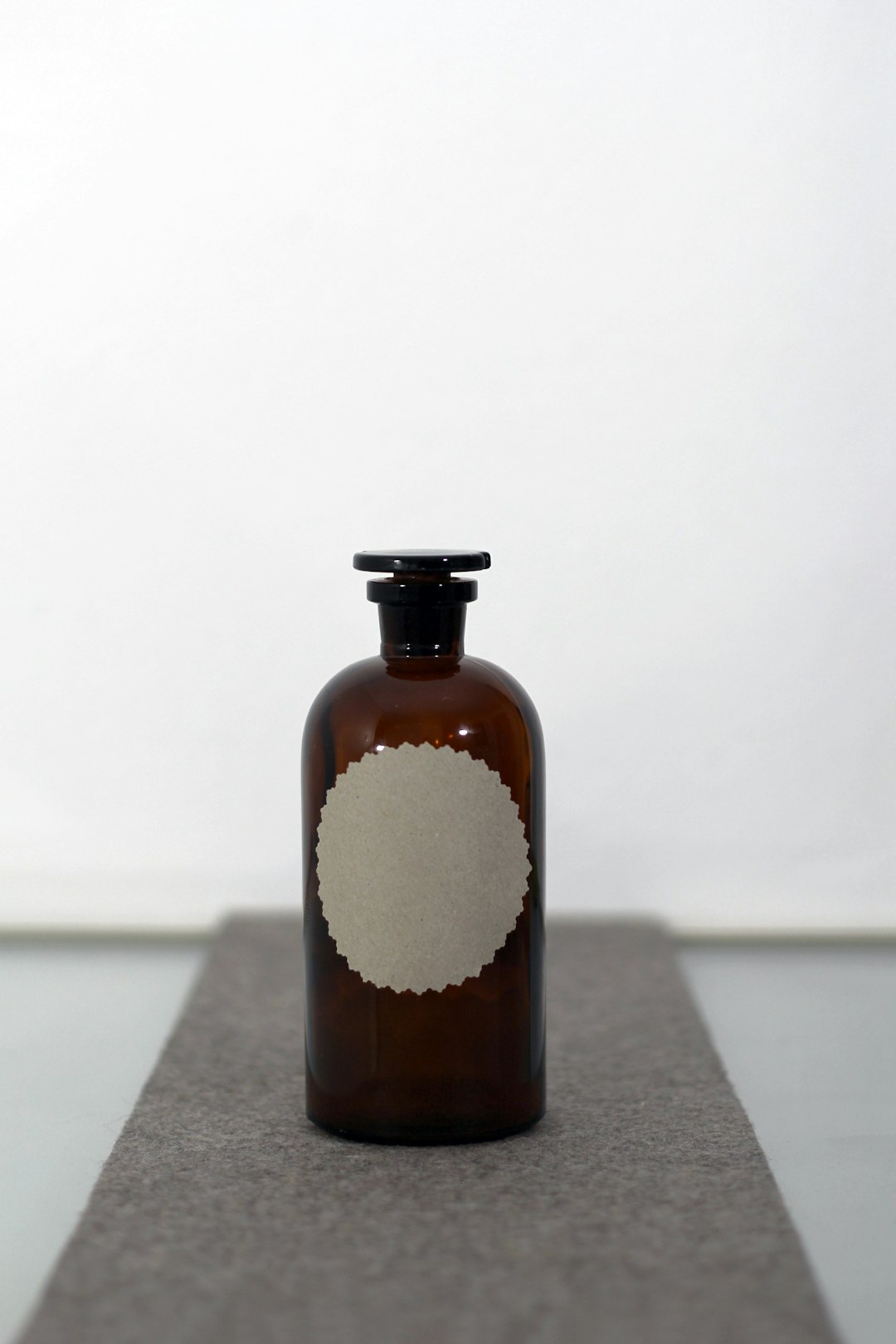
In the world of fragrance, the question of “What is the most famous perfume?” opens a treasure trove of history, artistry, and emotion. From the timeless elegance of Chanel No. 5 to the bold allure of Yves Saint Laurent Opium, each scent tells a story and evokes memories that can last a lifetime.
Summary of Positives and Negatives
Positives:
- Iconic Status: Many of the perfumes mentioned have achieved legendary status, making them a safe choice for anyone looking to invest in a fragrance with a rich history.
- Diverse Options: The wide range of scents—from floral to gourmand—ensures that there’s something for everyone, no matter your personal style.
- Quality Craftsmanship: Most of these fragrances are crafted with high-quality ingredients by renowned perfumers, ensuring a luxurious experience.
Negatives:
- Price Point: Some of these iconic fragrances can be on the pricier side, which may not be accessible for everyone.
- Popularity vs. Uniqueness: With fame comes the risk of being too mainstream; some fragrance enthusiasts might prefer niche options that offer a more unique scent experience.
In conclusion, we confidently recommend exploring these famous perfumes, as they not only represent the pinnacle of perfumery but also have the power to evoke emotions and memories that resonate deeply. So go ahead, indulge in a little olfactory luxury, and find the scent that speaks to you! 🌟
Recommended Links
- 👉 Shop Chanel No. 5 on: Amazon | Walmart | Chanel Official
- 👉 Shop Guerlain Shalimar on: Amazon | Walmart | Guerlain Official
- 👉 Shop Dior J’adore on: Amazon | Walmart | Dior Official
- 👉 Shop Yves Saint Laurent Opium on: Amazon | Walmart | YSL Beauty Official
- 👉 Shop Lancôme La Vie Est Belle on: Amazon | Walmart | Lancôme Official
FAQ

What are the top 10 most popular perfumes of all time?
The top 10 most popular perfumes often include classics like Chanel No. 5, Dior J’adore, Guerlain Shalimar, Yves Saint Laurent Opium, and Lancôme La Vie Est Belle. These fragrances are celebrated for their unique compositions, iconic status, and lasting appeal.
Read more about “Discover the 15 Most Popular Perfumes of 2024 That Everyone is Raving About! 🌟”
What makes a perfume brand famous and well-established?
A perfume brand becomes famous through a combination of factors, including high-quality ingredients, innovative marketing, celebrity endorsements, and a strong emotional connection with consumers. Brands like Chanel and Dior have built their reputations over decades, creating timeless fragrances that resonate with people across generations.
How do I choose the best perfume for my personal style and preferences?
To choose the best perfume, consider your scent preferences (floral, woody, oriental, etc.), the occasions you’ll wear it for, and how it interacts with your body chemistry. Testing fragrances on your skin and allowing them to develop over time is crucial.
Read more about “37 of the Best Perfumes for Men to Try in 2024 …”
What are some of the most iconic and influential perfume brands in history?
Some of the most iconic and influential perfume brands include Chanel, Dior, Guerlain, Yves Saint Laurent, and Lancôme. These brands have not only created legendary fragrances but have also shaped the fragrance industry with their innovative approaches and marketing strategies.
How do fragrance notes affect the overall scent?
Fragrance notes are categorized into three levels: top, heart, and base notes. Top notes are the initial scents you smell, heart notes form the core of the fragrance, and base notes provide depth and longevity. The interplay of these notes creates a complex and evolving scent experience.
Read more about “100+ Perfume Names A-Z: Unlocking the Secrets of Scent 👃”
Are celebrity fragrances worth trying?
Celebrity fragrances can vary in quality, but some have gained a loyal following and become cult favorites. It’s essential to try them for yourself and see if they resonate with your personal style, rather than relying solely on the celebrity endorsement.
Reference Links
- Chanel Official
- Guerlain Official
- Dior Official
- YSL Beauty Official
- Lancôme Official
- GoodTo.com – Best Perfumes of All Time
With this comprehensive guide, you’re now equipped to explore the enchanting world of perfumes and find the scent that truly resonates with you! Happy scent hunting! 🌸✨
